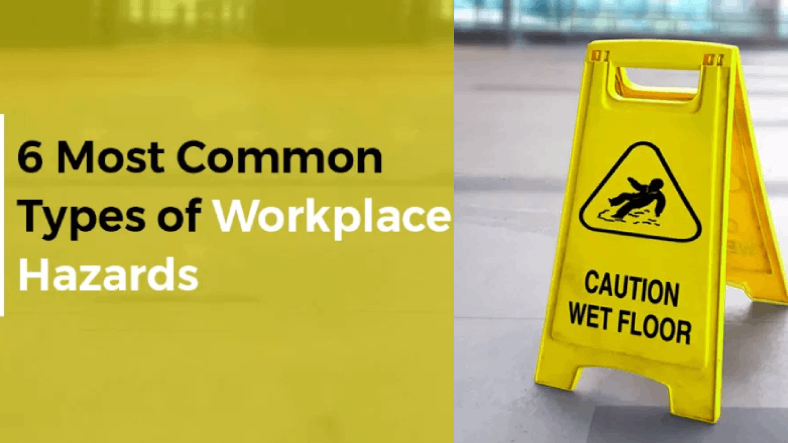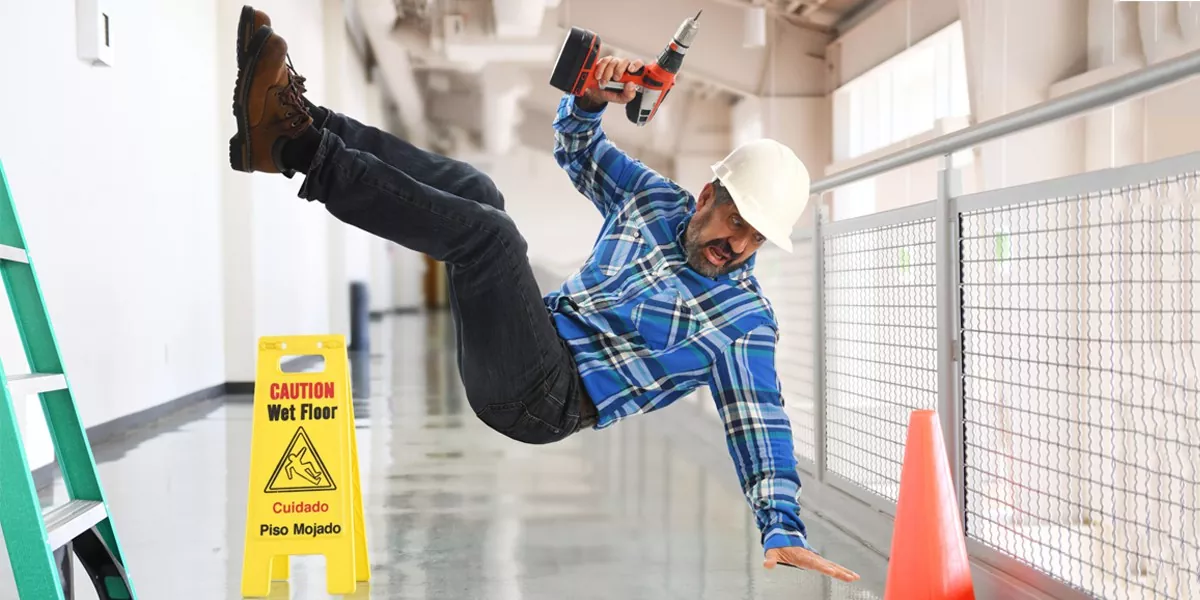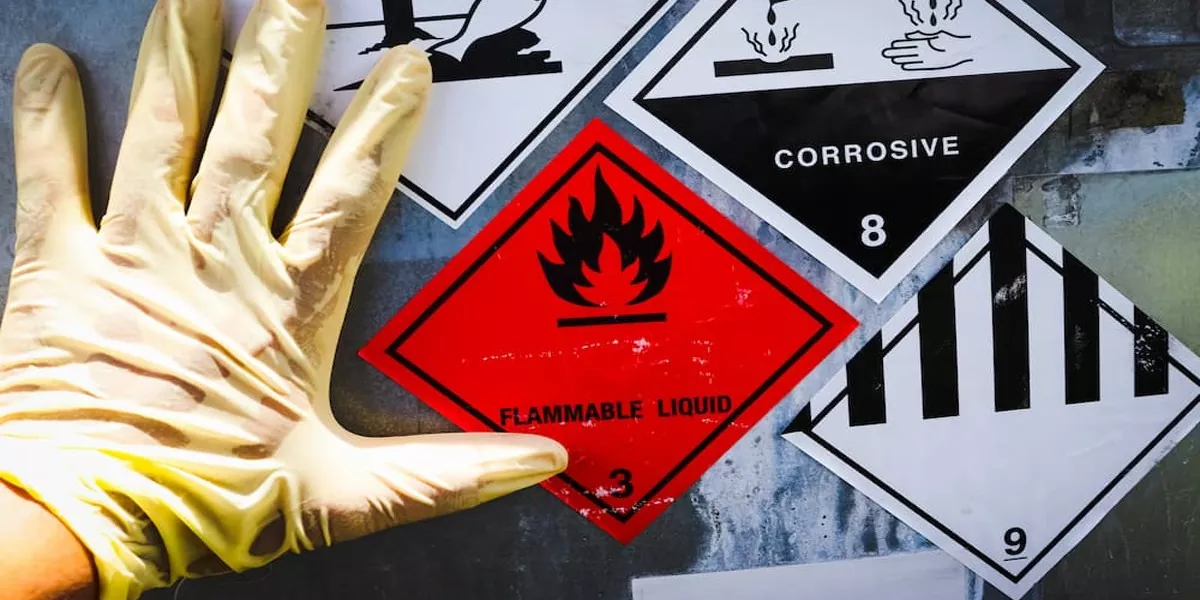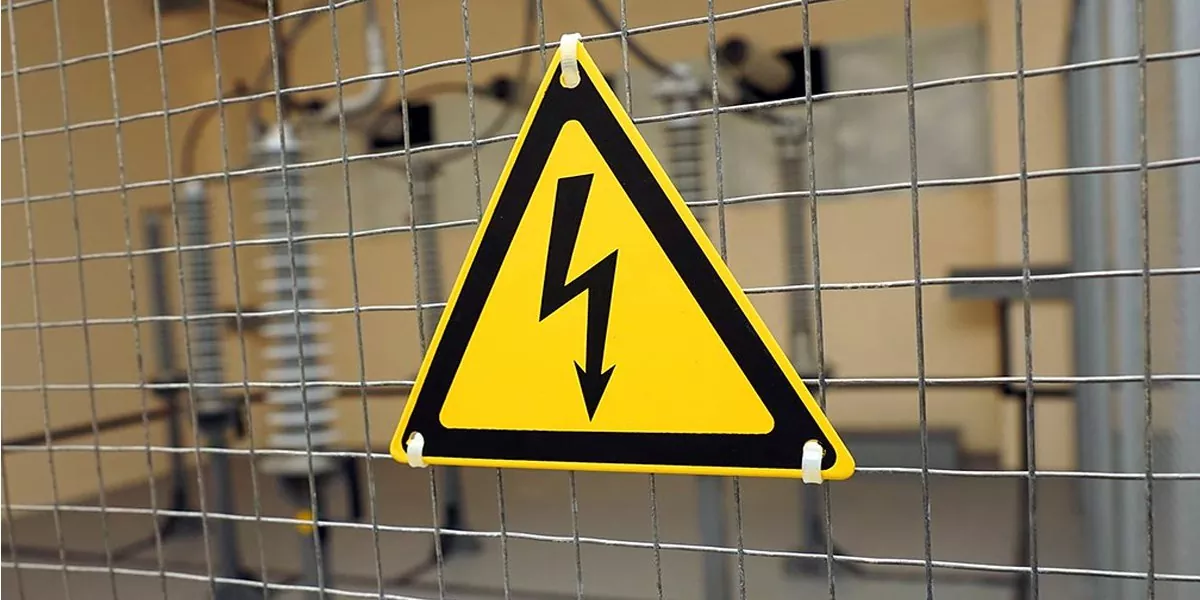6 Most Common Types of Workplace Hazards: How to avoid and Mitigate Them?
Date: 2025-10-23 | Read Time: 10 Mins

Workplace safety is important to ensure the health and safety of employees to prevent accidents and injuries. The major concern in maintaining a safe work environment is identifying and understanding various types of hazards that exist. In this blog, you will find an in-depth understanding of workplace hazards and how to recognize and mitigate them.
What are Workplace Hazards?
It’s easy to use the term ‘hazard’ and ‘risk’ vice versa. But the term hazard is a bit more subtle than risk. A hazard is any source of potential damage or harm that has an adverse effect on people, or any organization such as their property, environment, or equipment.
Workplace hazards occur when the working environment leads to illness, injury, or death of employees. These hazards come from different aspects of the working world including:
- Dangerous Materials
- Unsafe Handling of Equipment
- Poor Working Practices,
- Work Behavior of Employees
There are 6 most common types of hazards which happens frequently at workplace.
1. Physical Hazards
Physical hazards refer to conditions or objects at the workplace that cause physical harm to individuals. This would be any factor that harms the body without any necessary touch.

- Falling Objects: Falling objects pose a significant danger in workplaces with elevated areas or where objects are stored at height. These cause fractures in the head, strains, bruises, and sprains.
- Noise Hazards: Excessive noise levels lead to permanent hearing loss and other health issues. Neither surgery nor hearing aids can correct this type of hearing loss. Industries such as construction or manufacturing often involve loud machinery or equipment.
- Radiation: The greatest source of ultraviolet (UV) rays is sunlight. Employees who work in open areas are directly affected by these rays. Other harmful radiations are ionizing and non-ionizing rays such as EMFs, radio waves, and microwaves.
- Temperature Hazards: Employees exposed to high temperatures and pressure experience long-term health effects like heat stroke, heat exhaustion, hypothermia, and frostbite.
2. Chemical Hazards
Chemical hazards refer to substances present in the workplace that cause harm through inhalation, ingestion, or skin contact. Workers experience these hazards during chemical preparation in the workplace. Some remain safer than others, while some employees are sensitive to chemicals and get skin irritation, skin rashes, breathing issues, and disorders of the lungs and liver.

- Hazardous Substances: Many workplaces deal with hazardous substances, including flammable materials, gasoline, pesticides, toxic chemicals, solvents, or cleaning agents.
- Chemical Spills: Accidental spills of chemicals lead to immediate harm and long-term environmental damage. These spills would be in solid, liquid, and gaseous forms (acetylene, propane, carbon monoxide, helium, and H2S gas).
- Fumes and vapors: Certain work environments produce fumes and vapors that can be hazardous if inhaled. Examples include welding fumes, paint fumes, or toxic gases.
3. Biological Hazards
Biological hazards, commonly known asbiohazards, involve exposure to living organisms or their byproducts that can harm human health. These hazards disperse in the atmosphere via wind and water. Workplaces with these kinds of hazards are hospitals, daycare facilities, colleges and universities, laboratories, emergency response, nursing homes, and various outdoor occupations.

- Infectious Diseases: Workplaces such as healthcare facilities or laboratories may expose employees to infectious diseases. Coughing and sneezing spread in employees by airborne germs.
- Mold and Fungi: Damp or poorly ventilated workplaces promote the growth of mold and fungi. Prolonged exposure to mold spores leads to respiratory issues and allergies.
- Insect Bites and Stings: Outdoor or agricultural workplaces may expose employees to insects that can bite or sting. These pose risks, such as allergic reactions or the transmission of diseases.
- Biohazardous Materials: Biohazardous materials, including blood, body fluids, or biological samples, pose a risk of infection or contamination.
4. Ergonomics Hazards
Ergonomic hazards arise from factors that lead to musculoskeletal injuries or strains. These types of hazards are difficult to identify because when the body is hit by machinery, workers may experience mild symptoms. But with the passage of time, it leads to severe, long-term illness. Here are three common types of ergonomic hazards:

- Poor Workstation Setup: Improper workstation setup, including uncomfortable chairs, inadequate desk height, or poorly positioned computer screens, results in back pain, eye strain, and repetitive strain injuries.
- Repetitive Motion Injuries: Repetitive motion injuries occur when employees perform repetitive tasks without sufficient rest or ergonomic support. These injuries affect muscles, tendons, and nerves, which lead to conditions such as carpal tunnel syndrome.
- Manual Handling: Manual handling involves lifting, carrying, or moving heavy objects, which results in back injuries and strains.
5. Psychosocial Hazards
Psychosocial hazards refer to the impact of work-related stress on employees' mental and emotional health. Stress itself is not harmful, but over a long period of time, it can cause harm. These types of hazards distract workers from their proper work. The three most serious types of psychosocial hazards are:

- Work-related Stress: Excessive workload, long hours, unrealistic deadlines, or a lack of support contribute to work-related stress.
- Workplace violence: includes physical assaults, threats, or verbal abuse.
- Bullying and harassment: Bullying and harassment create an aggressive work environment, negatively impacting employees' health and productivity.
6. Safety Hazards
Safety hazards are the most typical hazards seen in many workplaces. These hazards directly affect the employees working at construction or machinery sites. Some of the safety hazards include:

- Slips, trips, and falls: Slips, trips, and falls are among the most common workplace accidents. They are caused by wet or uneven surfaces, clogged paths, or insufficient lighting.
- Electrical Hazards: Faulty wiring, exposed electrical parts, or improper use of electrical equipment can lead to electric shocks, burns, or fires.
- Fire Hazards: Insufficient fire safety measures, blocked fire exits, improper storage of flammable materials, or a lack of fire extinguishers can increase the risk of fires and make it difficult for employees to escape safely.
- Machinery and Equipment Hazards: Inadequate machine guarding, a lack of safety devices, or improper training result in accidents such as amputations, crush injuries, or entanglement.
How to Avoid and Mitigate Workplace Hazards
To avoid or mitigate hazards at the workplace, here are some general steps that can be taken:
i. Conduct risk assessments
Identify potential hazards in the workplace by conducting thorough risk assessments. Assess each task, process, or area to determine potential risks and prioritize them based on severity.
ii. Implement safety policies and procedures.
Develop and implement comprehensive safety policies and procedures that address identified hazards. Ensure that employees are aware of these policies and trained on proper safety practices.
iii. Provide adequate training
Train employees on safety procedures, hazard identification, and the correct use of equipment. Regularly refresh their knowledge about hazards and provide additional training when new hazards are introduced.
iv. Maintain a clean and organized workplace
Keep the workplace clean, clutter-free, and well-maintained to minimize slip, trip, and fall hazards. Regularly inspect and repair equipment, tools, and infrastructure to ensure their proper functioning.
v. Use personal protective equipment (PPE).
Provide appropriate personal protective equipment, such as safety goggles, gloves, helmets, or respiratory protection, based on the identified hazards. Train employees on how to use and maintain PPE correctly.
vi. Promote Ergonomic Practices
Implement ergonomic principles in workplaces and provide training on proper lifting techniques, posture, and stretching exercises to reduce the risk of musculoskeletal disorders.
vii. Control Hazardous Substances
Store and handle hazardous substances properly. Use ventilation systems, provide adequate labeling, and ensure employees have access to safety data sheets for proper handling, storage, and disposal.
viii. Regular equipment maintenance
Establish a maintenance schedule for machinery, tools, and equipment to prevent malfunctions or breakdowns that lead to accidents.
ix. Emergency Preparedness
Develop and communicate emergency response plans, including evacuation procedures, assembly points, and first aid protocols. Conduct regular drills to ensure employees are familiar with the procedures.
Takeaway
Maintaining a safe work environment requires identifying and addressing various types of workplace hazards. By understanding physical, chemical, biological, ergonomic, psychosocial, and safety hazards, employers and employees can work together to implement preventive measures and ensure the good health of everyone involved. Prioritizing safety not only protects individuals from harm but also leads to increased productivity and employee satisfaction.
.webp)
